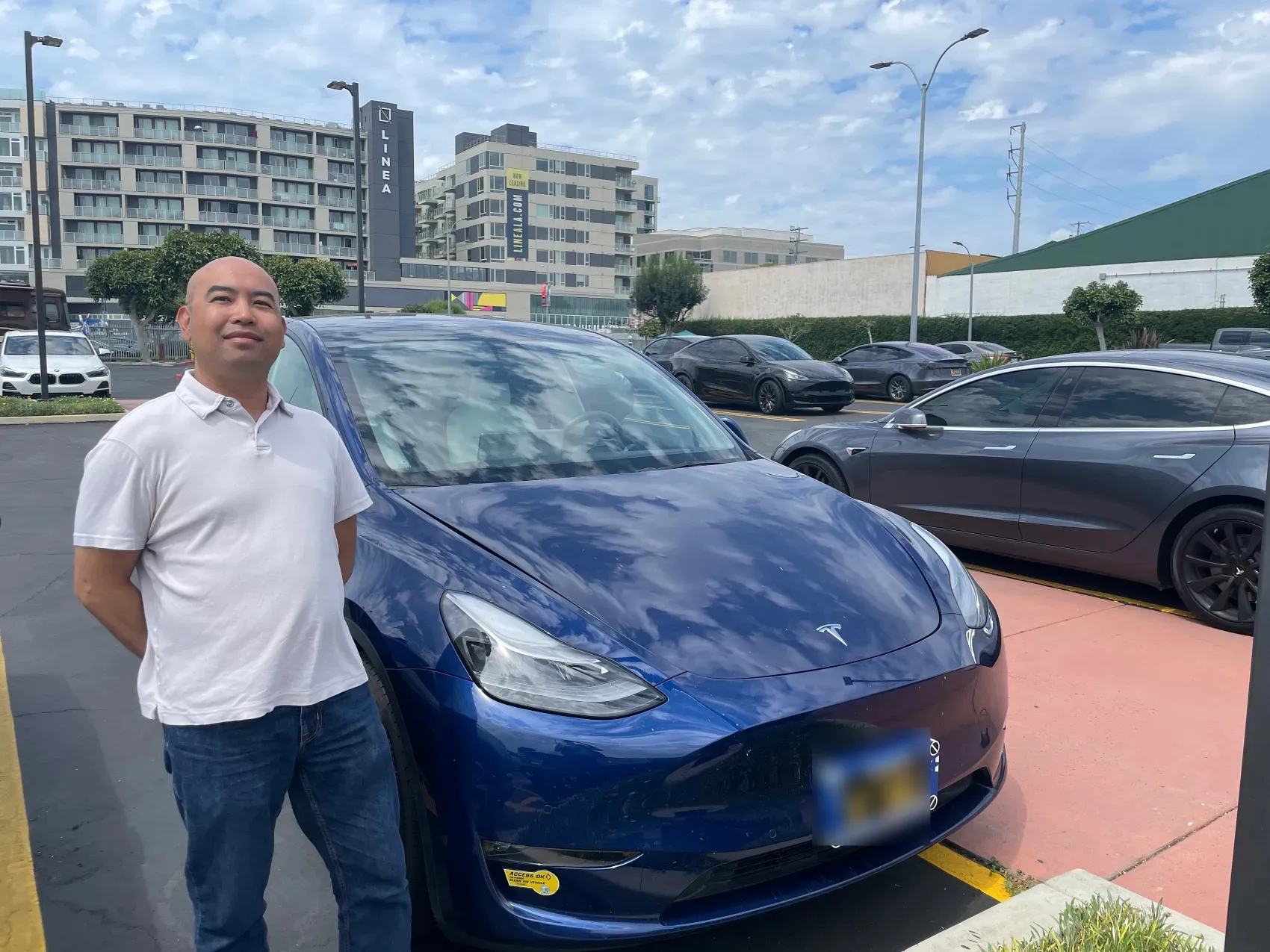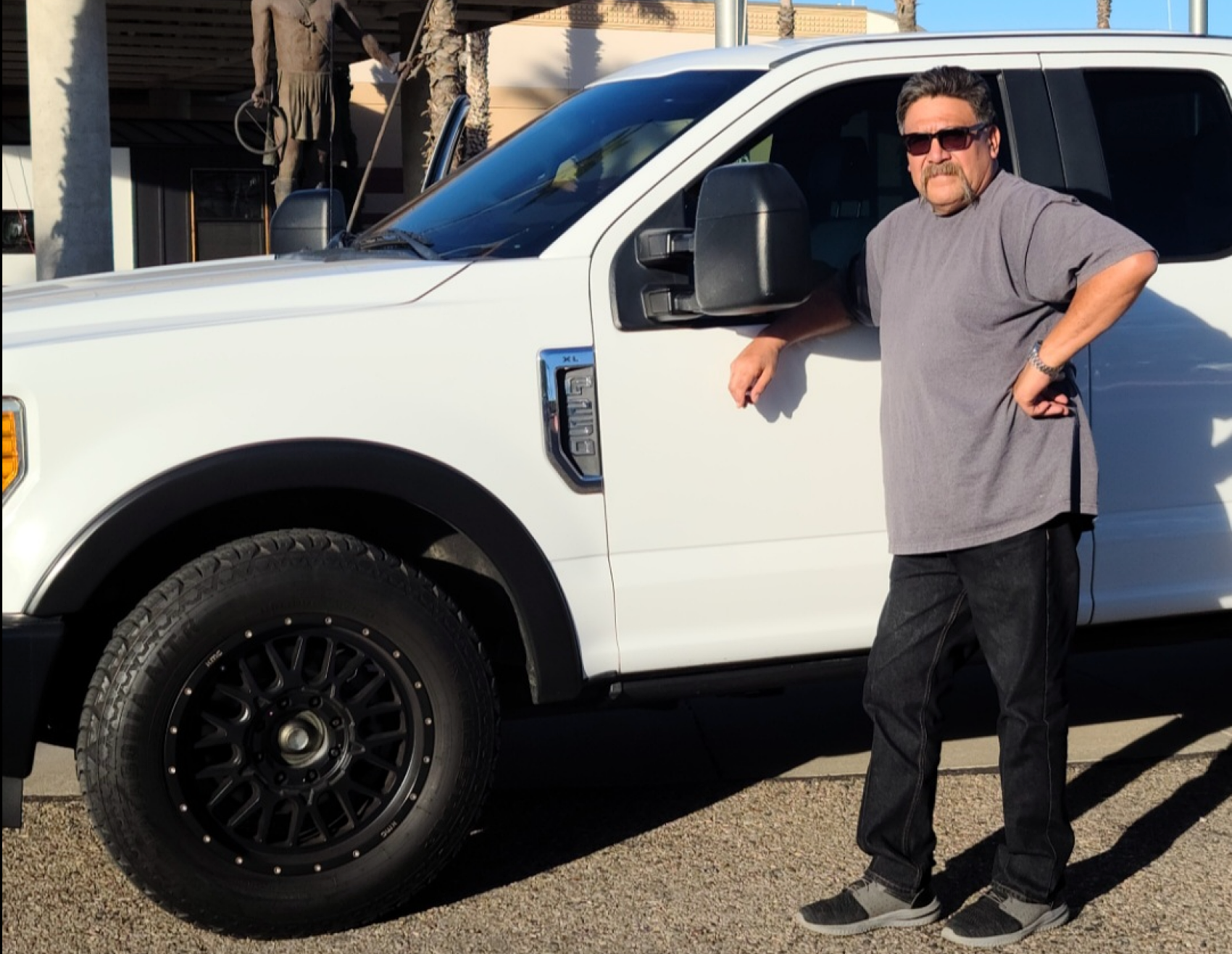The latest DMV data released Wednesday says one in four cars sold in California in the last quarter was electric.
That rate is 10 times higher than it was a decade ago, and the trend isn’t slowing down.
“It makes sense because as they're becoming more common, then everyone realizes it's an option,” says Tesla driver and San Fernando Valley resident Joey Gil.
The downside is those new electric cars are often in driveways in wealthier zip codes. That doesn’t surprise Gil, sitting in his employer’s parking lot in West LA.
“I mean, just in this parking lot, I'd say 15-20% of the cars here might even be Teslas.”
KCRW asked EV drivers why they’ve made the switch, and gas drivers why they haven’t. We received hundreds of responses. Turns out: Southern Californians have very strong opinions about what they drive.

Joey Gil named climate change as one of his primary reasons for switching to an electric car. Photo by Caleigh Wells.
The case for going electric
Why EVs? Two answers popped out.
“We do care about reducing our carbon footprint,” says Gil, who charges his car with the help of the solar panels on his roof.
The other big reason? It’s cheaper to drive.
“Definitely the financial piece was a motivator,” says Tiffiny Gage, who replaced both her and her husband’s gas cars with Teslas in 2021. “The fact that my husband was commuting, it only made sense that we go electric.”
Gage’s husband drives 100 miles round-trip for work every day from their home in Temecula. She says if he still drove his truck, they’d be spending more than $10,000 in gas per year.
Gage and Gil both own their homes. LA County zip codes with higher percentages of renters have lower EV adoption rates. Charging at home if you rent might not be possible, which means those drivers would need to rely more heavily on public charging sources.
Still cooking with gas
And that’s just one of the problems the gas drivers presented.
Mitch Rocha says driving past the superchargers on the road to Las Vegas confirms his concerns. “They're lined up waiting to get charged. So that's my main concern: infrastructure is not where it needs to be.”

Mitch Rocha says he is worried California’s infrastructure won’t be able to support EVs as the 2035 deadline to ban new gas-powered cars looms. Photo courtesy of Mitch Rocha.
Right now, Tesla’s robust network of superchargers isn’t available to other EV brands. Already there’s money set aside in the Inflation Reduction Act to help pay for more public chargers. But even if chargers weren’t an issue, the disparity in EV adoption might not be solved.
Luana Medina manages environmental initiatives for LA County, and she says the higher purchase price of an EV is another obstacle.
“What's really missing in the state of California is [a] program that can help overcome those barriers to an EV purchase,” she says.
The state does offer money for low-income consumers to help them buy EVs. But Medina says there’s a waitlist for that program. And even if an EV might save money in the long run, some folks can’t afford the higher upfront cost.
“They're faced with this [problem],” she says, about buying gas cars. “This is less costly, but it's bad for the environment.”
And the last big barrier: range anxiety.
That's been a concern for as long as there have been EV’s. And even though newer EVs have considerably more range than older models, people are worried they’ll run out of power.
Lowry has a Prius and a Ford F150. She says she really does want to go electric, but she and her husband are retired, and they take regular long camping trips.
“We don't go places where things are easily found. I mean, next summer's big trip is going to be to Alaska,” she says.
One of her favorite drives is from Tahoe to Utah on highway 50. The trip earned the title “The Loneliest Road in America.”
“It's stunningly beautiful,” she says. “But I bet you there's no way in my lifetime that anybody will ever be able to drive across that highway in an electric car. There's no interest in putting charging stations out there.”
The map for the Chargepoint network says most of the small towns on Highway 50 in Nevada have chargers. But currently, there may be as few as two. If both are in use, it would require patience on Lowry's road less traveled.
The Inflation Reduction Act is actively trying to change that. It has money set aside to put more universal car chargers in rural and low-income areas, in an effort to solve Lowry’s problem. Forecasters predict more than half of new cars will be electric worldwide by 2030.
In the meantime, governments and automakers have already started transitioning, and fast. So it might not be long before consumers resisting the switch will have to make it anyway.
